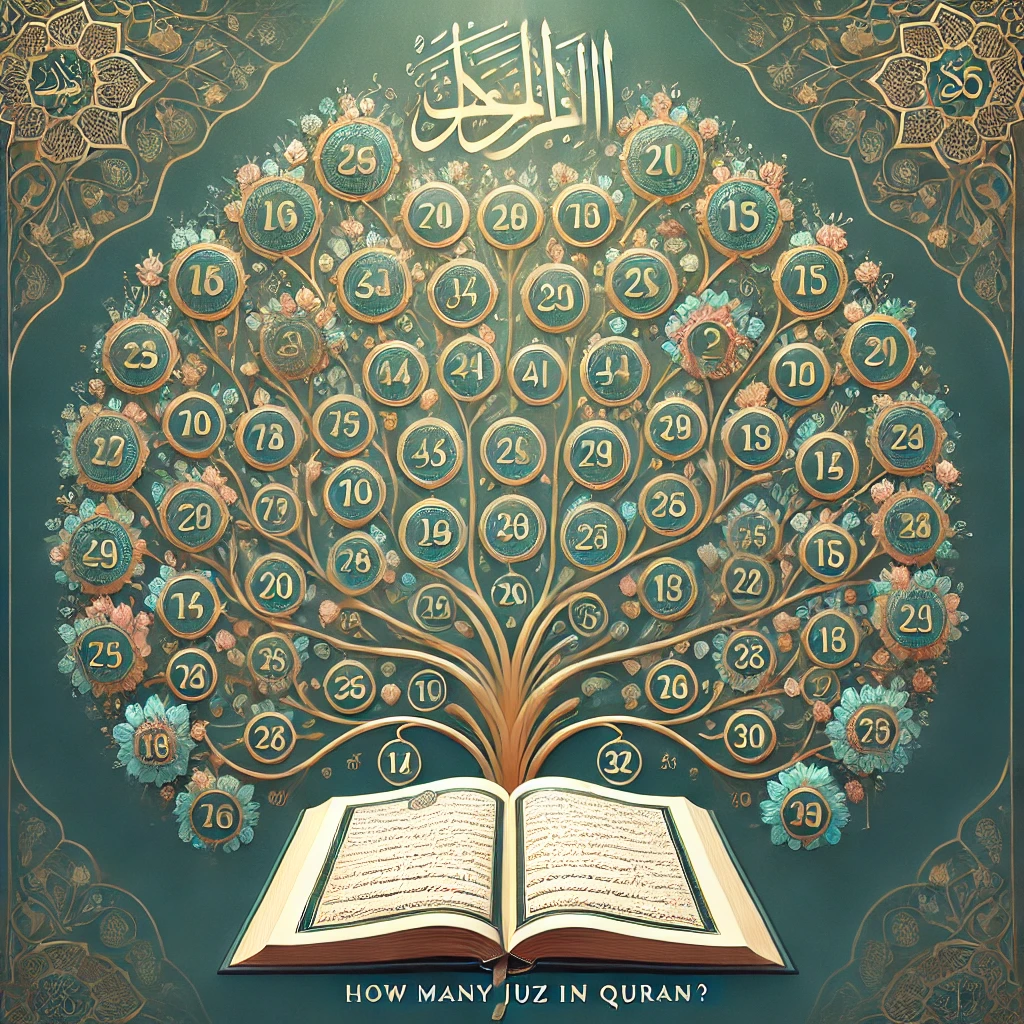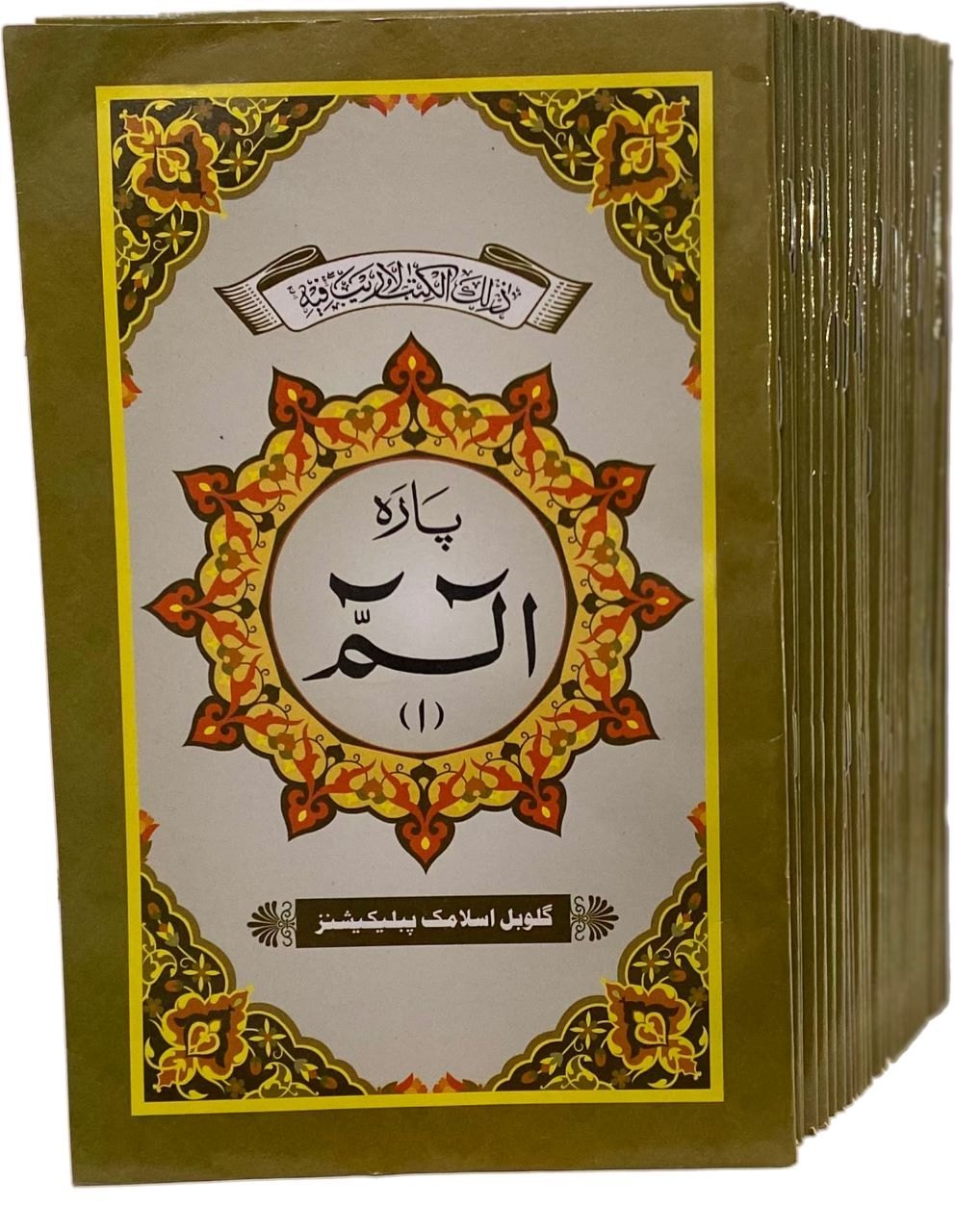
Learn about the Quran’s 30 Juz, their purpose, and significance. This guide explains how the Juz divisions aid recitation, memorization, and daily worship.
How Many Juz in Quran? A Complete Guide to Quranic Divisions
The Quran, Islam’s holy book, holds profound spiritual significance for Muslims worldwide. It is not just a scripture but also a guide for life, containing divine wisdom and laws revealed by Allah. To make recitation and memorization more accessible, the Quran is divided into 30 equal parts known as Juz (plural: Ajza). This article explores the structure, purpose, and significance of these divisions, providing a complete guide for anyone seeking a deeper understanding of the Quran.

How Many Juz in Quran? Understanding the 30 Parts
The Quran is divided into 30 Juz, each designed to facilitate a systematic approach to reading, memorizing, and reflecting on its verses. A Juz typically contains chapters (Surahs) and verses (Ayahs) that are proportionally arranged, ensuring each part is roughly equal in length.
The division into 30 parts was introduced by Islamic scholars centuries ago to help Muslims recite the Quran over a month, particularly during Ramadan. Each Juz can be recited in one day, allowing the entire Quran to be completed within 30 days.
Purpose Behind Dividing the Quran into Juz
The division of the Quran into Juz is not mentioned in the Quran itself but was established later as a practical tool for Muslims. Some key purposes include:
- Ease of Recitation: Dividing the Quran into manageable sections simplifies the process of reading and recitation, especially for those unfamiliar with its structure.
- Aid in Memorization: For those seeking to become Hafiz (memorizers of the Quran), the Juz system provides clear milestones for progress.
- Consistency in Worship: Muslims aim to recite one Juz daily during Ramadan, completing the Quran within the holy month.
The divisions also make it easier for scholars and imams to organize recitation during prayers, such as the nightly Tarawih prayers in Ramadan.
How Many Juz in Quran Aid Memorization and Recitation
Memorizing the Quran is a noble endeavor in Islam, and the Juz divisions play a critical role in achieving this goal. Each Juz is further divided into smaller sections (Hizb) to make memorization more manageable. There are 60 Hizb in the Quran, with two Hizb in each Juz.
Benefits of Juz in Memorization and Recitation:
- Structured Learning: Breaking down the Quran into smaller parts helps learners set achievable goals.
- Daily Recitation Plan: Muslims can follow a schedule to complete the Quran by reciting one Juz daily.
- Flexibility: The divisions allow readers to pick up their recitation at any point without losing track.

Key Insights About Each Juz in the Quran
Each Juz contains a mix of Surahs (chapters) and Ayahs (verses) with unique themes and messages. Some Juz include entire Surahs, while others span multiple Surahs.
- Juz 1: Includes Surah Al-Fatihah and part of Surah Al-Baqarah, emphasizing guidance and faith.
- Juz 30 (Juz Amma): Focuses on short Surahs often recited in daily prayers, such as Surah An-Nas and Surah Al-Ikhlas.
Certain Juz are particularly renowned for their themes, such as Juz 18, which contains the story of Prophet Musa (Moses) and Khidr, and Juz 15, which marks the midpoint of the Quran.
How Many Juz in Quran Are Recited During Ramadan?
During Ramadan, the Quran is often recited in full in Tarawih prayers, with one Juz typically recited each night. This practice fosters a deeper connection with the Quran and reinforces its teachings.
Muslims also engage in personal recitation, aiming to complete the Quran within the 30 days of Ramadan. The division of the Quran into 30 Juz makes this spiritual goal attainable, enhancing the experience of the holy month.
Tips for Reading and Memorizing the 30 Juz in Quran
- Set a Daily Schedule: Dedicate a specific time each day to recite or memorize one Juz.
- Use Quran Apps and Tools: Digital resources can help track progress and provide translations or tafsir (explanations).
- Understand the Meaning: Pair recitation with reading translations to grasp the Quran’s message.
- Practice with a Partner or Teacher: Studying in a group or with a mentor helps improve accuracy and retention.
- Recite in Prayers: Incorporate memorized sections into daily prayers for reinforcement.

Conclusion
The Quran’s division into 30 Juz is a testament to its divine structure and practicality. It allows Muslims to connect deeply with the Quran through recitation, memorization, and reflection. Whether during Ramadan or as part of daily worship, understanding how many Juz are in the Quran and their significance can inspire a lifelong journey with the holy book.
Embrace the beauty of this structure and strive to integrate the Quran into your daily life, one Juz at a time.
 Colors
Colors 
 Support
Support 







